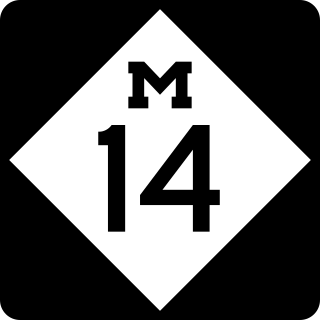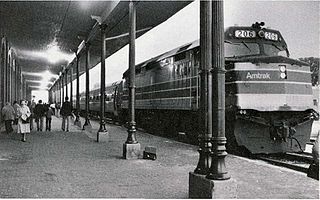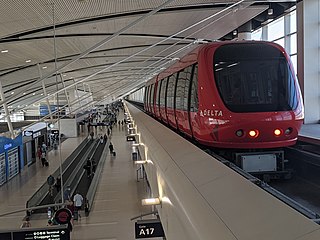Contents
WALLY route map | ||||||||||||||||||||||||||||||||||||||||||||||||||||||||||
|---|---|---|---|---|---|---|---|---|---|---|---|---|---|---|---|---|---|---|---|---|---|---|---|---|---|---|---|---|---|---|---|---|---|---|---|---|---|---|---|---|---|---|---|---|---|---|---|---|---|---|---|---|---|---|---|---|---|---|
| ||||||||||||||||||||||||||||||||||||||||||||||||||||||||||
WALLY (the Washtenaw–Livingston Rail Line) [1] was a commuter rail service proposed in 2008 which would have linked the Michigan cities of Ann Arbor and Howell. It never got past the planning stages.
WALLY route map | ||||||||||||||||||||||||||||||||||||||||||||||||||||||||||
|---|---|---|---|---|---|---|---|---|---|---|---|---|---|---|---|---|---|---|---|---|---|---|---|---|---|---|---|---|---|---|---|---|---|---|---|---|---|---|---|---|---|---|---|---|---|---|---|---|---|---|---|---|---|---|---|---|---|---|
| ||||||||||||||||||||||||||||||||||||||||||||||||||||||||||
WALLY (the Washtenaw–Livingston Rail Line) [1] was a commuter rail service proposed in 2008 which would have linked the Michigan cities of Ann Arbor and Howell. It never got past the planning stages.
Trains would have run daily over existing trackage owned by the Great Lakes Central Railroad, which also committed to providing ten stainless-steel bi-level passenger cars. The service was proposed as an alternative to adding a third lane to U.S. Highway 23 (US 23), which would cost upwards of $500 million. [2] The Ann Arbor Area Transportation Authority was named the "designated authority" for the project in 2008. [3]
Initial start-up costs were projected at $2.9 million, with annual operating costs at $4.8 million. Backers of the project estimate 884,000 rides per year, 1,300 daily, with a fare revenue of $2.4 million. The remainder would be subsidized by state and local governments. [2] The project has received funding commitments from the Michigan Department of Transportation, the Ann Arbor Downtown Development Authority, and the Northfield Township Downtown Development Authority. Attempts to obtain a $1 million grant from the Federal government fell through. [4] Both the University of Michigan and the Ann Arbor offices of the Environmental Protection Agency would pay the fares of any employees who took the train in lieu of commuting. [2] Backers conducted a $150,000 feasibility study of the line, with money pledged by the University of Michigan, the Great Lakes Central Railroad, the Southeast Michigan Council of Governments (SEMCOG), Washtenaw and Livingston Counties. [5] [6] The study reported back that the project is viable, but placed start-up costs at $32.4 million, much higher than initial estimates. Most of the outlay would be for infrastructure improvements. [7] After three years of service the line would become eligible for federal transportation funding. [8]
In April 2010 supporters announced a scaled-back proposal with start-up costs of $16–20 million, with yearly operating costs of $7.1 million. [9] As of September 2011, $16 million had been spent on capital costs with another projected $19 million required for startup, and operating costs were projected as an annual $5.4 million. [10] In his oral update [11] to the AATA board on January 19, 2012, AATA CEO Michael Ford reported on WALLY, the north-south commuter rail project that would connect Howell and Ann Arbor. Ford stressed that it’s currently not a viable project without the TIGER III funding that it failed to secure.
In October 2014, a new study of the commuter rail service began. Expected to take about 18 months, the study will focus on more detailed operational aspects of the possible service than the 2008 study did. The detailed operational aspects the study will explore include ridership, station and maintenance facility locations, as well as cost and funding. [12] The new study will also examine possible alternatives to rail service, such as bus service and additional highway lanes. [12] The study is funded primarily through a Transportation and Community System Preservation grant, jointly administered by the Federal Highway Administration and the Federal Transit Administration, as well as a 20% match from the Ann Arbor Area Transportation Authority. [12] As of 2020 [update] the project has been indefinitely canceled due to a failed ballot for transit funding.[ citation needed ]
The proposed end-points of the service are Ann Arbor and Howell. The service will run a total length of 27 miles (43 km). The line is operated by the Great Lakes Central Railroad, a regional railroad who leases the track from CSX, and was originally built by the Lansing, Alma, Mt. Pleasant & Northern and the Toledo, Ann Arbor & North Michigan, forerunners of the Ann Arbor Railroad, between 1885 and 1895. [13] Proposed intermediate stops include Brighton, Hamburg and Whitmore Lake. The stop in Brighton would not be in the downtown but rather at Chilson Road, four miles (6.4 km) to the west, as the railroad line through the downtown is owned by CSX directly and no operating agreement has been reached. Also pending is an arrangement with the Ann Arbor Railroad for service over the last 1.75 miles (2.82 km) into Ann Arbor itself. Trains in Ann Arbor would stop on Plymouth Road near the North Campus of the University of Michigan and would neither cross the Huron River nor interchange directly with Amtrak. [2] [14] [15]
From 2010 to 2015, the Michigan Department of Transportation refurbished and leased twenty-three 1950's-1960's retired Metra rail cars in anticipation of WALLY, which still had not received any approval or capital or operational funding. Over the five-year period, the passenger rail cars sat unused in a railyard owned by Great Lakes Central Railroad in Owosso, northeast of Lansing. The state paid over $12 million lease the passenger rail cars, spending $7.3 million in refurbishments, $3 million in lease charges, and another $1.1 million for consulting. Public outcry led to the termination of the lease which had continued to cost the state $1.1 million annually. [16] The terms of the new agreement allowed Great Lakes Central to lease the rail cars to other entities, but the cars would be made available upon request to MDOT for the next five years. In addition, 50-70% of the lease or sale revenue from the rail cars would be returned to the state. [17]

Metro Detroit is a major metropolitan area in the U.S. state of Michigan, consisting of the city of Detroit and over 200 municipalities in the surrounding area with its largest employer being Oakland County. There are varied definitions of the area, including the official statistical areas designated by the Office of Management and Budget, a federal agency of the United States.

M-14 is an east–west state trunkline highway in the southeastern portion of the US state of Michigan. Entirely freeway, it runs for 22.250 miles (35.808 km) to connect Ann Arbor with Detroit by way of a connection with Interstate 96 (I-96). The western terminus is at a partial interchange with I-94 west of Ann Arbor. From there, the freeway curves around the north side of Ann Arbor and runs concurrently with US Highway 23 (US 23). East of that section, M-14 passes through woodlands and fields in Washtenaw County. In Wayne County, the freeway returns to a suburban area of mixed residential neighborhoods and light industrial areas. It crosses two different rivers and a pair of rail lines as it approaches Detroit's inner suburbs, where it terminates at an interchange between I-96 and I-275.

The Grand Trunk Western Railroad Company was an American subsidiary of the Grand Trunk Railway, later of the Canadian National Railway operating in Michigan, Illinois, Indiana, and Ohio. Since a corporate restructuring in 1971, the railroad has been under CN's subsidiary holding company, the Grand Trunk Corporation. Grand Trunk Western's routes are part of CN's Michigan Division. Its primary mainline between Chicago and Port Huron, Michigan serves as a connection between railroad interchanges in Chicago and rail lines in eastern Canada and the Northeastern United States. The railroad's extensive trackage in Detroit and across southern Michigan has made it an essential link for the automotive industry as a hauler of parts and automobiles from manufacturing plants.

The South Shore Line is an electrically powered interurban commuter rail line operated by the Northern Indiana Commuter Transportation District (NICTD) between Millennium Station in downtown Chicago and the South Bend International Airport in South Bend, Indiana, United States. The name refers to both the physical line and the service operated over that route. The line was built in 1901–1908 by predecessors of the Chicago South Shore and South Bend Railroad, which continues to operate freight service. Passenger operation was assumed by the NICTD in 1989. The South Shore Line is one of the last surviving interurban trains in the United States. In 2022, the system had a ridership of 1,406,400, or about 5,000 per weekday as of the second quarter of 2023.

The Michigan Central Railroad was originally chartered in 1832 to establish rail service between Detroit, Michigan, and St. Joseph, Michigan. The railroad later operated in the states of Michigan, Indiana, and Illinois in the United States and the province of Ontario in Canada. After about 1867 the railroad was controlled by the New York Central Railroad, which later became part of Penn Central and then Conrail. After the 1998 Conrail breakup, Norfolk Southern Railway now owns much of the former Michigan Central trackage.

The Ann Arbor Area Transportation Authority (AAATA), branded as TheRide, is the public transit system serving the Ann Arbor and Ypsilanti area in the U.S. state of Michigan. In fiscal year 2021, the system had a ridership of 1,725,797.

Southeast Michigan, also called southeastern Michigan, is a region in the Lower Peninsula of Michigan that is home to a majority of the state's businesses and industries as well as slightly over half of the state's population, most of whom are concentrated in Metro Detroit.

M-153 is an east–west state trunkline highway in the Metro Detroit area of the US state of Michigan. It is also known as Ford Road for nearly its entire length, except for its westernmost portion where the highway follows a short expressway to M-14. Named for William Ford, father of Henry Ford, Ford Road runs from near Dixboro to the Dearborn–Detroit border. The M-153 designation continues along Wyoming Avenue where it terminates at a junction with Interstate 94 (I-94) and US Highway 12 (US 12) on the city line.

Mary Markley Hall (Markley) is a residence hall operated by the University of Michigan University Housing in Ann Arbor.

The Wolverine is a higher-speed passenger train service operated by Amtrak as part of its Michigan Services. The 304-mile (489 km) line provides three daily round-trips between Chicago and Pontiac, Michigan, via Ann Arbor and Detroit. It carries a heritage train name descended from the New York Central.

Ann Arbor station is a train station in Ann Arbor, Michigan, United States that is served daily by Amtrak's Wolverine, which runs three times daily between Chicago, Illinois and Pontiac, Michigan, via Detroit.

Detroit station, also known as Baltimore Street station, is an intermodal transit station in Detroit, Michigan. It currently serves Amtrak. It also serves as a stop for Greyhound Lines, Detroit Department of Transportation buses, Suburban Mobility Authority for Regional Transportation buses and QLine streetcars. It is located at the southwest corner of Woodward and West Baltimore avenues in the New Center area. Amtrak's Wolverine line serves an elevated platform at the main building, while the QLine serves an adjacent platform on Woodward Avenue.

The Hartford Line is a commuter rail service between New Haven, Connecticut, and Springfield, Massachusetts, using the Amtrak-owned New Haven–Springfield Line. The project is a joint venture between the states of Connecticut and Massachusetts, with support from the federal government as well. CT Rail-branded trains provide service along the corridor, and riders can use Hartford Line tickets to travel on board most Amtrak trains along the corridor at the same prices. The service launched on June 16, 2018.

Railroads have been vital in the history of the population and trade of rough and finished goods in the state of Michigan. While some coastal settlements had previously existed, the population, commercial, and industrial growth of the state further bloomed with the establishment of the railroad.

Ann Arbor–Detroit Regional Rail is a planned regional rail link along the Michigan Line between the cities of Ann Arbor and Detroit, Michigan, a total length of 39.72 miles (63.92 km). The project would connect with a proposed Detroit bus rapid transit service and the QLine streetcar.

The Michigan Executive was a commuter train operated by Amtrak between Detroit, Michigan, and Jackson, Michigan. Amtrak took over the service from Penn Central in 1975 and discontinued it in 1984.

Transportation in metropolitan Detroit comprises an expansive system of roadways, multiple public transit systems, a major international airport, freight railroads, and ports. Located on the Detroit River along the Great Lakes Waterway, Detroit is a significant city in international trade, with two land crossings to Canada. Three primary Interstate highways serve the region.

The Pontiac Transportation Center is an intermodal terminal station located in Pontiac, Michigan that is served by Amtrak's Michigan Services Wolverine. The transportation center is also served by Indian Trails intercity bus service and Suburban Mobility Authority for Regional Transportation (SMART) regional bus service.
The Regional Transit Authority of Southeast Michigan (RTA) is the agency with oversight and service coordination responsibility for mass transit operations in metropolitan Detroit, Michigan. The counties of Macomb, Oakland, Washtenaw, and Wayne are included in the agency's jurisdiction.

SEMTA Commuter Rail, also known as the Silver Streak, was a commuter train operated by the Southeastern Michigan Transportation Authority (SEMTA) and the Grand Trunk Western Railroad between Detroit and Pontiac, Michigan. It began in 1974 when SEMTA assumed control of the Grand Trunk's existing commuter trains over the route. SEMTA discontinued operations in 1983. Amtrak began offering intercity service between Detroit and Pontiac in 1994 as part of its Michigan Services.